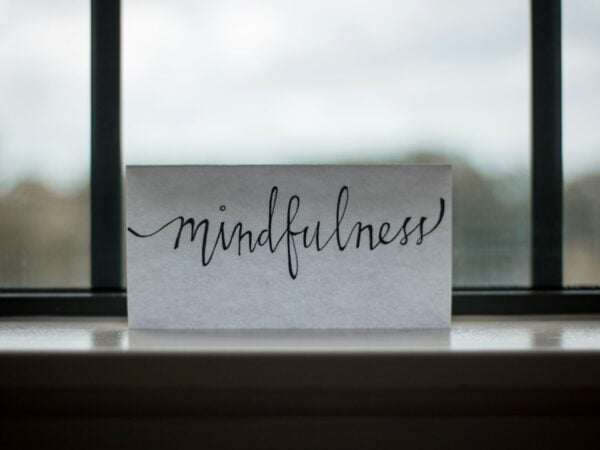
Get Fit at Home: Beginner-Friendly Workouts to Kickstart Your Fitness Journey
For beginners who are just starting their fitness journey, home workouts can be a great option. There are several reasons why working out at home is convenient and accessible. First, you have the flexibility to exercise whenever you want, without having to worry about gym hours or class schedules. You can fit in a workout before work, during your lunch break, or in the evening, depending on what works best for you.
Another advantage of Home workouts is the cost-effectiveness. You don’t need to spend money on a gym membership or expensive fitness classes. Instead, you can invest in a few basic pieces of equipment and create a workout space in your own home. This can save you money in the long run and make it easier to stick to your fitness routine.
Finally, working out at home allows you to customize your workouts to your own preferences and schedule. You can choose the exercises that you enjoy and that align with your fitness goals. Whether you prefer strength training, cardio workouts, yoga, or a combination of different exercises, you have the freedom to design your own workout routine.
Key Takeaways
- Home workouts are a great option for beginners because they are convenient, cost-effective, and can be done at any time.
- Working out at home has many benefits, including saving time and money, avoiding crowded gyms, and having privacy.
- To set up your home gym, you’ll need basic equipment such as dumbbells, resistance bands, and a yoga mat.
- Bodyweight workouts are a great option for those who don’t have equipment, and can be done anywhere.
- HIIT workouts are intense, effective, and time-efficient, making them a great option for those with busy schedules.
The Benefits of Working Out at Home
One of the main benefits of working out at home is increased privacy and comfort. Many people feel self-conscious when exercising in front of others, especially if they are just starting out or trying new exercises. By working out at home, you can exercise in the privacy of your own space without worrying about others watching or judging you. This can help you feel more comfortable and confident as you progress in your fitness journey.
Another advantage of home workouts is that you don’t have to worry about gym etiquette or feeling self-conscious about using equipment incorrectly. In a gym setting, there may be unwritten rules about how to use certain machines or weights, which can be intimidating for beginners. At home, you can focus on learning proper form and technique without feeling rushed or judged.
Additionally, home workouts can be more time-efficient. When you exercise at home, you eliminate the time it takes to commute to and from the gym. This can save you valuable time, especially if you have a busy schedule. You can also eliminate distractions and interruptions that may occur in a gym setting, allowing you to focus on your workout and get it done more efficiently.
Setting Up Your Home Gym: Equipment You’ll Need
Setting up a home gym doesn’t have to be expensive or complicated. There are a few basic pieces of equipment that can help you get started with your workouts. First, consider investing in a set of dumbbells or adjustable weights. These can be used for a variety of exercises, such as bicep curls, shoulder presses, and lunges. Resistance bands are another versatile and affordable option for strength training exercises.
A yoga mat is also a useful piece of equipment to have for floor exercises and stretching. It provides cushioning and support for your body and helps prevent slipping during yoga or Pilates workouts. If you have the space and budget, you may also consider adding a stability ball, kettlebells, or a pull-up bar to your home gym setup.
If you’re on a tight budget or don’t have access to equipment, don’t worry! Bodyweight exercises can be just as effective for building strength and endurance. Exercises such as push-ups, squats, and lunges can be done without any equipment and still provide a challenging workout. You can also use household items such as water bottles or cans as makeshift weights.
Bodyweight Workouts: No Equipment Necessary
| Exercise | Repetitions | Sets | Rest Time | Difficulty Level |
|---|---|---|---|---|
| Push-ups | 10-20 | 3-4 | 30-60 seconds | Beginner to Advanced |
| Squats | 10-20 | 3-4 | 30-60 seconds | Beginner to Advanced |
| Lunges | 10-20 (each leg) | 3-4 | 30-60 seconds | Beginner to Advanced |
| Plank | 30-60 seconds | 3-4 | 30-60 seconds | Beginner to Advanced |
| Mountain Climbers | 10-20 (each leg) | 3-4 | 30-60 seconds | Intermediate to Advanced |
Bodyweight exercises are a great option for beginners because they require no equipment and can be done anywhere. They are effective for building strength, improving endurance, and increasing flexibility. Plus, they can easily be modified to make them easier or more challenging, depending on your fitness level.
Push-ups are a classic bodyweight exercise that targets the chest, shoulders, and triceps. To modify push-ups, you can start with knee push-ups or incline push-ups using a sturdy surface like a bench or countertop. As you get stronger, you can progress to full push-ups on your toes.
Squats are another effective bodyweight exercise that targets the lower body, including the quadriceps, hamstrings, and glutes. To make squats easier, you can start with chair squats, where you sit back onto a chair and stand up again. As you build strength, you can progress to bodyweight squats and eventually add weights for more resistance.
Lunges are a great exercise for targeting the legs and glutes. To modify lunges, you can start with reverse lunges or stationary lunges where you don’t step forward or backward. As you get more comfortable, you can progress to walking lunges or add weights for an extra challenge.
Cardio Workouts: Getting Your Heart Rate Up
Cardiovascular exercise is important for overall health and fitness. It helps improve heart health, burn calories, and increase endurance. The good news is that you don’t need fancy equipment or a lot of space to get a good cardio workout at home.
Jumping jacks are a simple yet effective cardio exercise that gets your heart rate up. Start with a basic jumping jack motion, where you jump your feet out wide while raising your arms overhead. If jumping is too intense for your joints, you can modify by stepping out to the side instead of jumping.
High knees are another great cardio exercise that targets the legs and core. Stand in place and lift your knees up towards your chest as high as you can while pumping your arms. You can do high knees at a moderate pace or increase the intensity by going faster.
Mountain climbers are a challenging cardio exercise that also works the core and upper body. Start in a plank position with your hands directly under your shoulders. Alternate bringing one knee towards your chest while keeping the other leg extended. Move quickly and smoothly, as if you’re climbing a mountain.
Strength Training: Building Muscle and Toning Your Body

Strength training is an essential component of any fitness routine, as it helps build muscle, increase bone density, and improve body composition. You don’t need a lot of equipment to get started with strength training at home.
Bicep curls are a classic strength training exercise that targets the biceps. Hold a dumbbell in each hand with your palms facing forward. Slowly curl the weights up towards your shoulders, keeping your elbows close to your sides. Lower the weights back down with control and repeat.
Tricep extensions are another effective exercise for targeting the back of the arms. Hold a dumbbell in both hands and extend your arms overhead. Bend your elbows to lower the weight behind your head, then straighten your arms to lift the weight back up. Keep your elbows close to your head throughout the movement.
Shoulder presses are a great exercise for targeting the shoulders and upper back. Hold a dumbbell in each hand at shoulder height with your palms facing forward. Press the weights overhead until your arms are fully extended, then lower them back down with control.
Yoga and Pilates: Improving Flexibility and Balance
Yoga and Pilates are great options for improving flexibility, balance, and mindfulness. They can help reduce stress, increase body awareness, and improve posture. You don’t need any equipment to get started with yoga or Pilates at home, although a yoga mat can provide cushioning and support.
Downward dog is a common yoga pose that stretches the entire body, including the hamstrings, calves, shoulders, and back. Start on your hands and knees, then lift your hips up towards the ceiling while pressing your heels towards the floor. Keep your head relaxed and your shoulders away from your ears.
Plank is a challenging exercise that targets the core, shoulders, and arms. Start in a push-up position with your hands directly under your shoulders and your body in a straight line from head to heels. Engage your core and hold this position for as long as you can, making sure to keep your hips level.
The Pilates hundred is a classic Pilates exercise that targets the core and increases circulation. Lie on your back with your knees bent and feet flat on the floor. Lift your head, neck, and shoulders off the mat and extend your arms by your sides. Pump your arms up and down while inhaling for five counts and exhaling for five counts.
HIIT Workouts: Intense, Effective, and Time-Efficient
High-intensity interval training (HIIT) is a popular workout style that involves short bursts of intense exercise followed by periods of rest or lower intensity. HIIT workouts are known for their effectiveness in burning calories, improving cardiovascular fitness, and increasing metabolism.
Tabata intervals are a type of HIIT workout that involves 20 seconds of intense exercise followed by 10 seconds of rest, repeated for a total of four minutes. You can choose any exercise you like, such as squats, burpees, or mountain climbers, and perform it at maximum effort during the 20-second intervals.
AMRAP circuits (As Many Rounds As Possible) are another effective way to incorporate HIIT into your home workouts. Choose a set of exercises, such as push-ups, lunges, and sit-ups, and perform as many rounds as possible in a set amount of time, such as 10 or 15 minutes. Take short breaks as needed but try to keep moving throughout the entire workout.
Ladder workouts are a challenging form of HIIT that involve increasing or decreasing the number of repetitions for each exercise in a circuit. For example, you could start with 10 squats, 10 push-ups, and 10 sit-ups, then decrease the number by one for each round until you reach one repetition. This type of workout is great for building endurance and mental toughness.
Tips for Staying Motivated and Consistent with Your Home Workouts
Staying motivated and consistent with your home workouts can be a challenge, especially when you’re just starting out. Here are some tips to help you stay on track:
1. Set realistic goals: Start with small, achievable goals that you can work towards. This will help you stay motivated and see progress over time.
2. Track your progress: Keep a workout journal or use a fitness app to track your workouts and see how far you’ve come. Celebrate your achievements and use them as motivation to keep going.
3. Find accountability: Whether it’s a workout buddy, a virtual fitness community, or a personal trainer, find someone who can hold you accountable and provide support along the way.
4. Incorporate variety and fun: Keep your workouts interesting by trying new exercises, switching up your routine, or adding music or podcasts to make it more enjoyable.
5. Be consistent: Make exercise a non-negotiable part of your daily routine. Schedule it into your calendar and treat it like any other important appointment.
Start Your Fitness Journey Today with These Beginner-Friendly Home Workouts
In conclusion, home workouts are a great option for beginners who want to start their fitness journey. They offer convenience, cost-effectiveness, and the ability to customize your workouts to your own preferences and schedule. Whether you choose bodyweight exercises, cardio workouts, strength training, yoga, Pilates, or HIIT workouts, there are plenty of options to keep you motivated and help you achieve your fitness goals.
Remember, fitness is a journey, not a destination. Start small, be consistent, and focus on progress rather than perfection. With time and dedication, you will see improvements in your strength, endurance, flexibility, and overall well-being. So why wait? Start your fitness journey today and reap the benefits of home workouts.
FAQs
What are home workouts?
Home workouts are exercises that can be done at home without the need for any gym equipment or machines. These workouts can be done using bodyweight exercises, resistance bands, dumbbells, or household items.
Why should beginners do home workouts?
Home workouts are a great way for beginners to start their fitness journey as they are convenient, cost-effective, and can be done at any time. They also provide a safe and comfortable environment for beginners to learn and practice exercises without feeling intimidated.
What are some examples of home workouts for beginners?
Some examples of home workouts for beginners include bodyweight exercises such as squats, lunges, push-ups, and planks. Resistance band exercises such as bicep curls, tricep extensions, and lateral raises are also great for beginners. Dumbbell exercises such as shoulder presses, chest presses, and rows can also be done at home.
How often should beginners do home workouts?
Beginners should aim to do home workouts at least 3-4 times a week. It is important to start slowly and gradually increase the intensity and duration of the workouts as the body adapts to the exercises.
What are the benefits of home workouts?
Home workouts have many benefits, including improved cardiovascular health, increased muscle strength and endurance, improved flexibility and balance, and reduced stress and anxiety. They also provide a convenient and cost-effective way to stay fit and healthy.


















